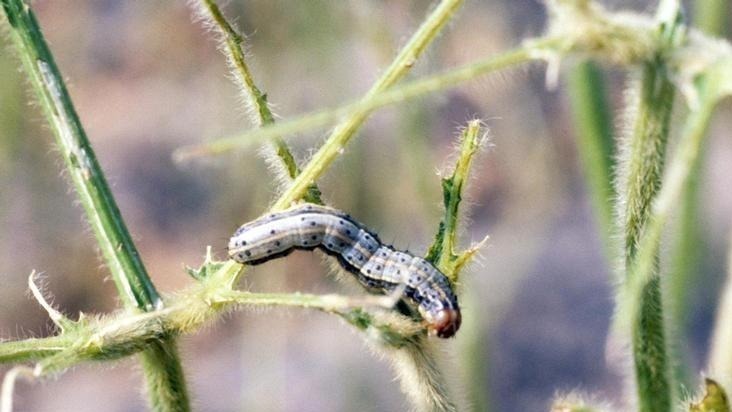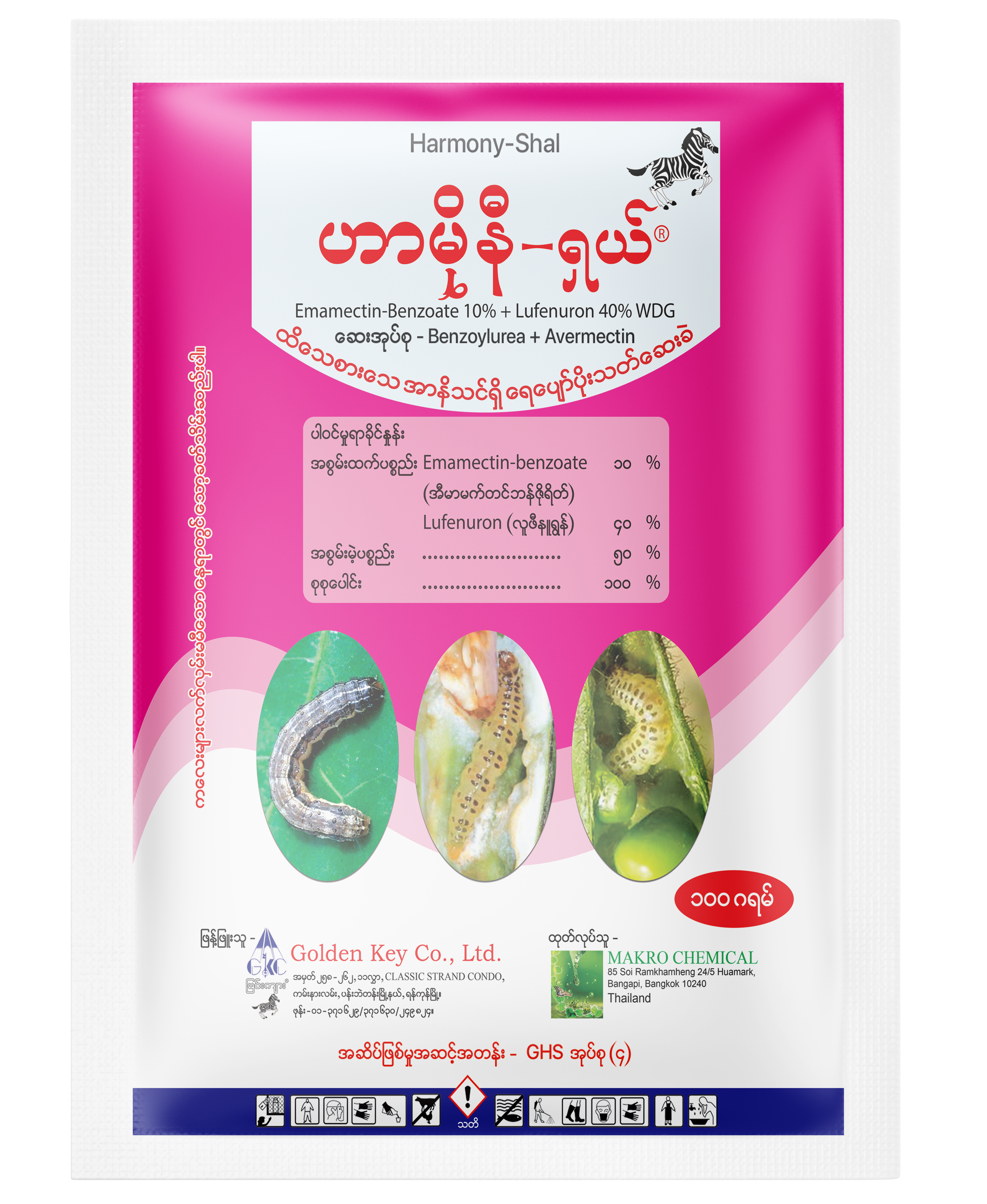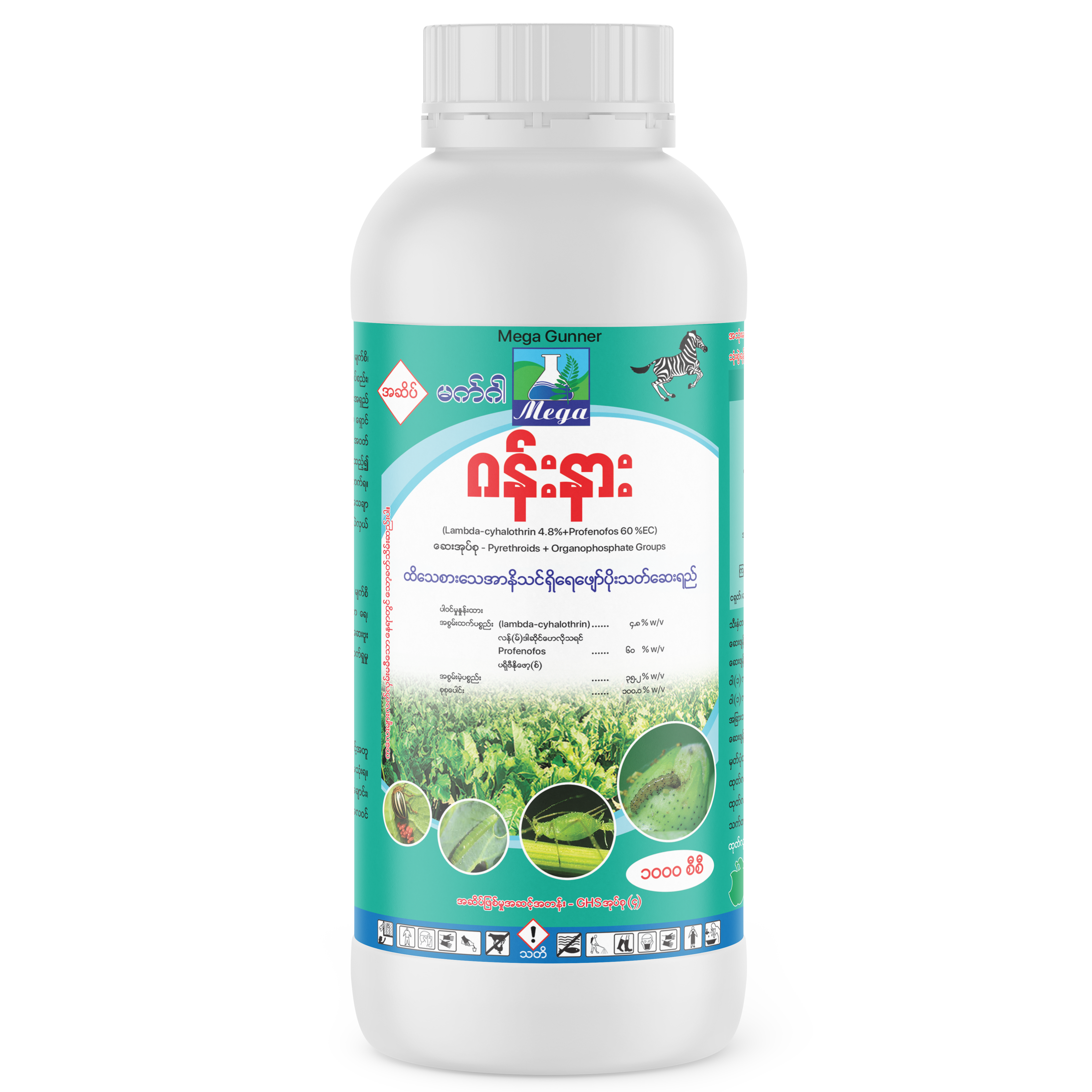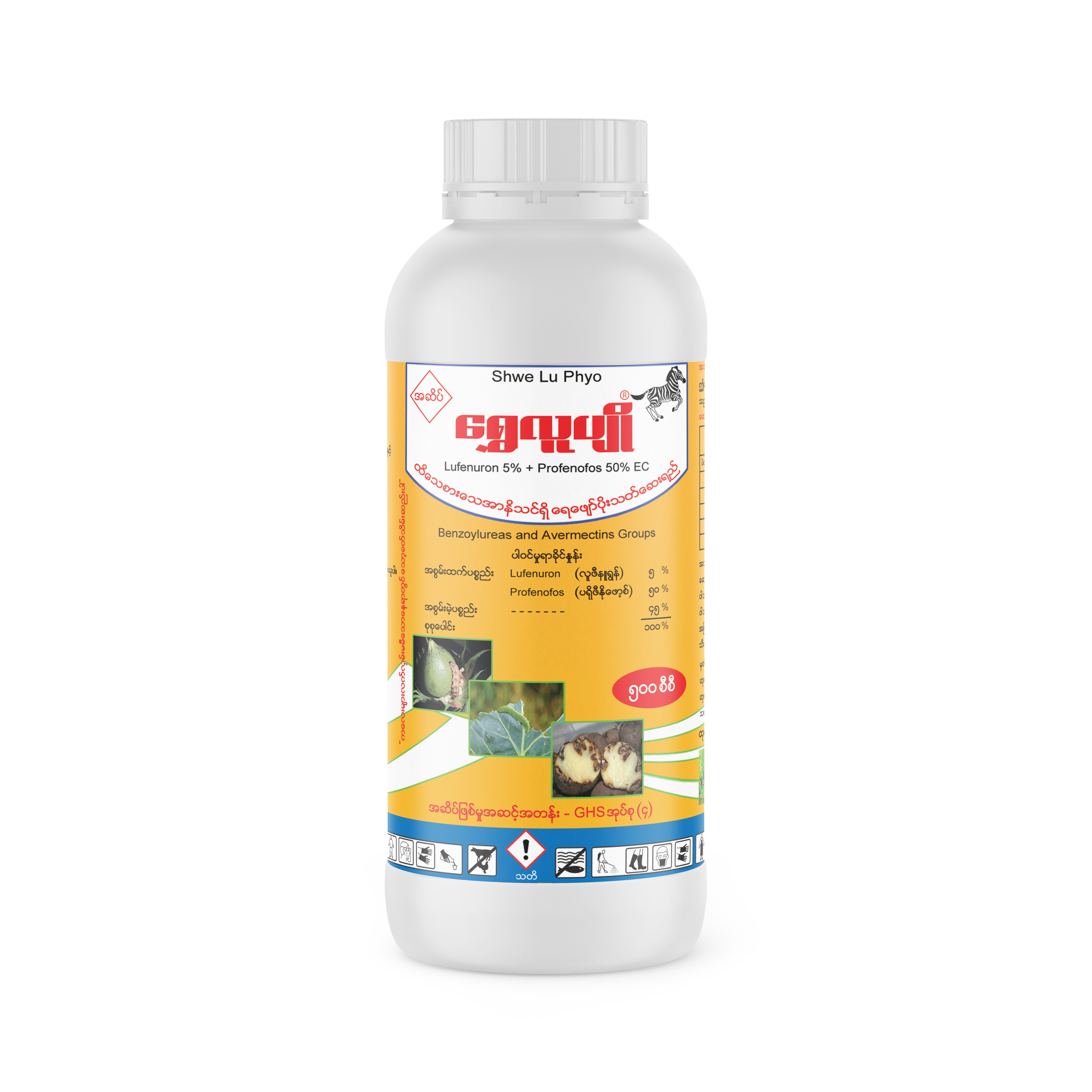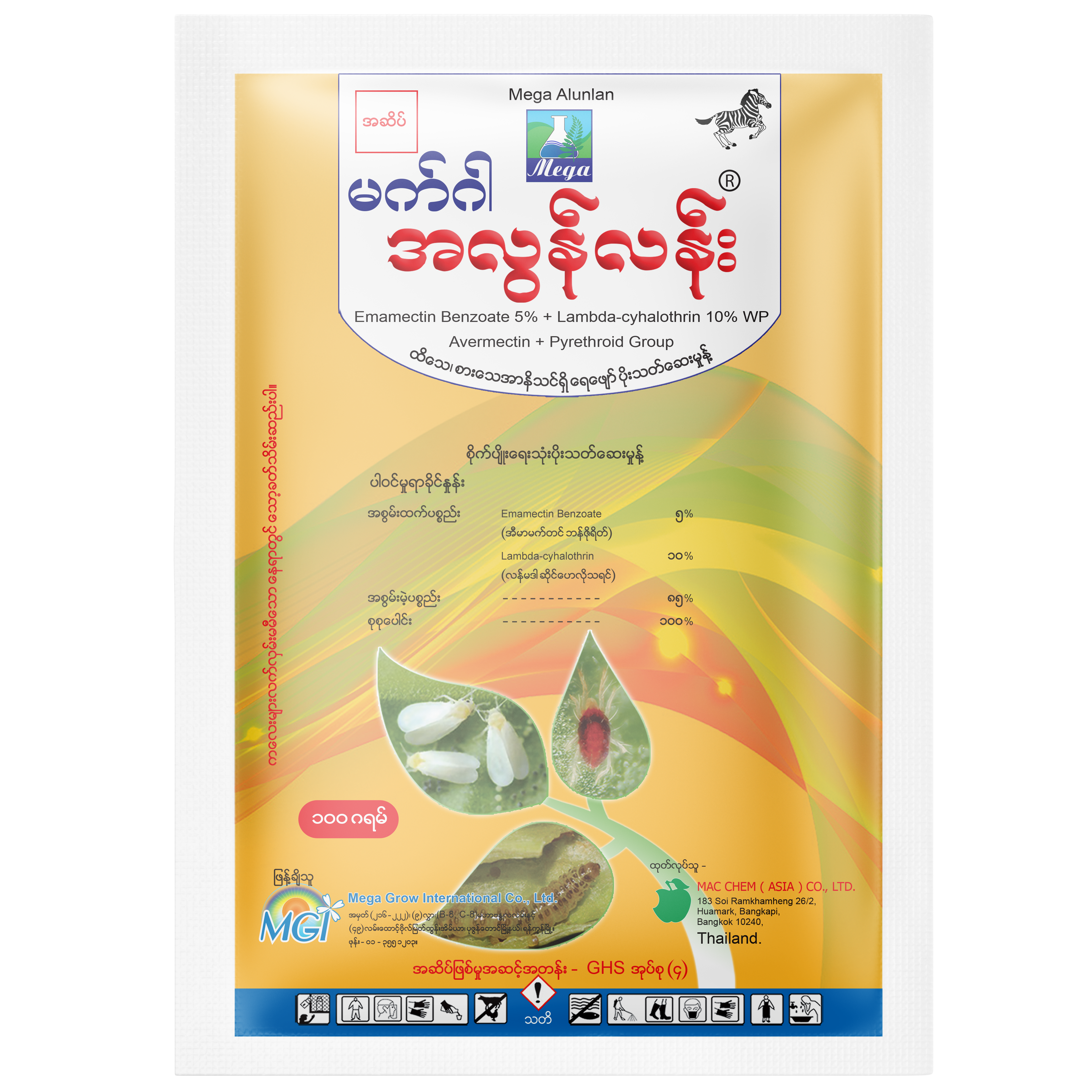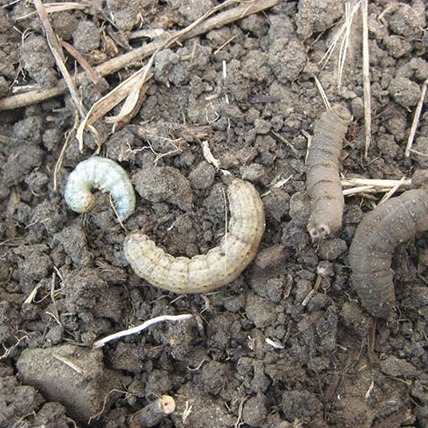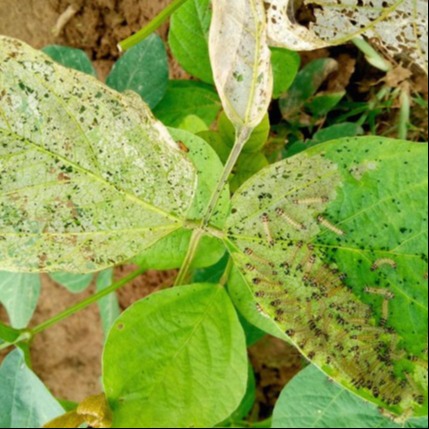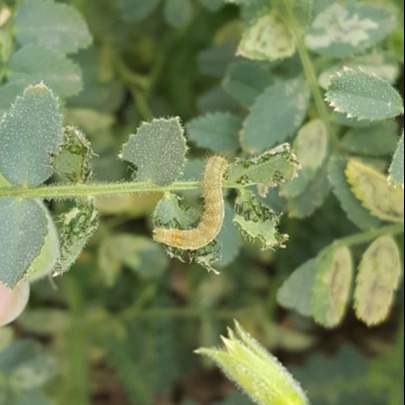Armyworm
Symptom
Eggs are usually laid on the underside of leaves in clustered masses of 100-200, covered with a ‘felt like’ layer of scales. Upon hatching, young larvae scrape the leaf surface, removing the green tissue and creating a characteristic windowpane effect. As they mature, larvae consume various plant parts, resulting in irregular holes and ragged edges on leaves, window-pane or transparent patches, and skeletonized foliage, with severe infestations leading to bare spots and stunted plant growth. In their later stages, larvae are most destructive during early morning and late afternoon, while during the daytime, they tend to seek shelter in the soil near the plant base.


